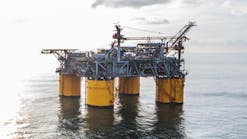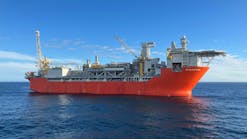Managing Oil and Gas Companies-II The Challenge In Asia: Finding Best Value-Creation Potential
Ted RedmondThe refining and marketing expansion opportunities in Asia are tremendous. Asia is home to nine of the world's 20 most populous countries, including the Indian subcontinent. The continent's sheer size, combined with rapid industrialization, translates into a large and surging demand for oil products. In fact, Asia will soon surpass Europe and North America to become the largest petroleum products consuming region in the world.
The Boston Consulting Group
TorontoNicholas Bloy
The Boston Consulting Group
Asia
The challenge facing managements of oil and gas companies is how to sort through all the opportunities and decide which have the highest value-creation potential for their companies. This challenge is complicated by the increasing competitive intensity in many Asian markets brought about by the growing number and strength of competitors, many of which may also be setting priorities and arriving at possibly similar conclusions.
It is no longer the opportunity itself that will create value but rather the capability of the organization to turn the opportunity into operations faster and better than its competitors do.
Market growth, profitability
Over the next decade, strong growth will occur in most of the developing countries in Asia. Refined product demand is predicted to grow faster in Asia than in any other region of the world except the former Soviet Union (F.S.U., Fig. 1 [29367 bytes]).
This strong growth on a large base will amount to demand for an additional 6.5 million b/d of oil by the year 2011, roughly equivalent to 30 new world-scale refineries.
A look at Asian demand by country (Fig. 2 [32675 bytes]) indicates that the developing countries of China, Thailand, and Indonesia are among the largest and fastest growing. Other smaller markets exhibiting very fast growth are the Philippines and Indo-China (i.e., Viet Nam, Cambodia, Laos), while growth in some of the more mature Asian markets such as Japan, Singapore, and Malaysia will be slower over the next 14 years.
Asian markets also appear to be among the most profitable for refining and marketing. The level of competitive intensity in most markets is lower than in the mature European and North American markets. Some Asian markets have regulated product pricing or pricing cooperation among competitors, which has enabled market participants to consistently earn good profits.
Winning market share
The more-developed countries of Japan, Korea, Taiwan, Singapore, and Hong Kong all have mature refining and marketing infrastructures and sophisticated competitors. The slower product consumption growth rates make it difficult to win market share in these countries. Entry into these markets is now possible only for those with a compelling competitive advantage such as a patented refining technology or a marketing approach that is difficult to replicate.
In many Asian markets, companies such as Shell (see case study) and Caltex have proven their ability to manage the risks and are firmly entrenched; other competitors are entering aggressively. In addition to the major oil companies, these other competitors include the new breed of Asian national oil company, best exemplified by Malaysia's Petronas and Thailand's Petroleum Authority of Thailand, which are increasingly capable and well-funded and have longer-term investment horizons than private-sector companies.
The entrenched competitors have brand-name recognition and in some cases have grandfathered privileges such as majority foreign ownership that new entrants are not allowed. Some of the new entrants have begun to change the basis of competition. For example, Conoco has gained share in Thailand, under its Jet brand name, by aggressive price reductions and by building convenience-store stations that are large, modern, and well laid-out, even by European or North American standards.
Challenging the incumbents is expensive. The investment required to achieve a 20% market share in the larger of the developing markets is staggering (Fig. 3 [26570 bytes]). While the investment required to build a comprehensive marketing network is high enough, it may also be necessary to build a refining system. For example, in India and Viet Nam, it appears that investing in a refinery may be the only way to be granted marketing access.
Restrictive foreign ownership regulations in emerging Asian markets also raise issues about being in control of your investment and protecting your brand name. There are ways to mitigate this such as by establishing effective control by choosing a passive local majority partner that views the business as an investment rather than a company to run. This allows the foreign minority owner to have sufficient control of operations to protect the integrity of brand names.
Finally, there is the risk of government expropriation of assets or civil unrest. While favorable business climates in the developing Asian countries are fueling demand growth, it is not unthinkable that one or two of the developing countries will have problems over the next decade. This risk is especially worrisome for companies that cannot diversify political risk over multiple countries.
Where, when to enter
With the risks, competition, and large investment required to enter new markets, country selection and timing must be carefully considered.
For most companies seeking to expand into new markets, value creation potential is the primary criterion used to identify and rank markets to enter. One approach that has proven to be helpful when trying to estimate the value-creation potential of a new market is to first estimate the market's profit potential and then determine the multiplying effect provided by market growth. This can be done quite simply, as will be discussed.
An approach that helps to clearly identify and rank markets to target for future entry focuses limited financial and organizational resources on opportunities with the highest value-creation potential. Unfortunately, many companies pursue market entry on a purely opportunistic basis without adequately considering alternative markets in which they could invest and create more value. A framework for systematically determining which markets have the highest value creation potential is shown in Fig. 4 [22431 bytes] and involves these steps:
- Decide on the geographic region in which to pursue new market entry. Do a first-cut analysis to determine which regions are likely to offer the highest value-creation potential and best match the company's current capabilities. The primary purpose of this broad-brush approach is to limit the scope of subsequent analysis to a manageable level. For example, looking at Fig. 1 [29367 bytes], a European oil company may decide that it would be better off focusing on Asia rather than Latin America due to the faster Asian growth and the projected Asian product shortfall.
- Select countries with the highest likelihood of value creation. Forecasting the value-creation potential of a country is, like any forecasting exercise, an estimation of how future events will unfold. This can be done by looking at the present level of value creation in a country and combining that with forecasts of the key determinants of value (i.e., growth and profitability). This forecast will be of sufficient accuracy to classify countries as highly likely, likely, or not likely to have significant value-creation potential.
Profitability can be forecast by looking at the current profitability of competitors, the size of the market, the business and political risk of the country, and the likelihood of future price competition as new competitors enter the market. Likewise, growth can be forecast by looking at current and forecast gross domestic product (GDP) per capita growth rates and by understanding the nonlinear nature of products demand growth and GDP per capita (Fig. 5 [31248 bytes]).
- Determine countries with "bestfit" (i.e., relative ability of a company to realize the value-creation potential of the country vis-a-vis competitors). Countries with high value-creation potential may not all be a good fit for any given company. Each country has its own unique set of competitive and regulatory dynamics. For example, Thailand has a very competitive marketing environment with over 10 major players active in populous Bangkok. Companies wanting to enter Thailand must have world-class marketing capabilities to be successful or be prepared to acquire and consolidate existing players.
A number of company-specific factors, such as relative competitive capabilities, regional supply position, or political influence, can be used to evaluate high value-creation potential countries. What is important here is the company's relative advantage vis-a-vis existing and likely competitors, not an absolute assessment of capabilities.
- Prioritize entry based on urgency and available opportunities. Selecting which attractive value-creation opportunities to pursue first should be based upon an assessment of the relative attractiveness of the opportunities and a consideration of which opportunities are the most urgent. Urgency is primarily driven by conditions that dissipate over time.
For example, a country reaching the "take-off" point on the market maturity S-curve shown in Fig. 5 (e.g., the Philippines) has a limited period of accelerated growth that is shared only by early market entrants. By the time a country reaches the midpoint on the S-curve (e.g., Malaysia), competition is likely entrenched and growth is beginning to slow. Entry becomes even more difficult as the country becomes fully developed and demand growth slows dramatically.
Slow or no growth can create a product surplus, which destroys refining margins and creates a viable products spot market. This spot market can facilitate the entry of small independent marketers, which, in turn, drives down marketing margins. Clearly there is an urgency to enter a market before it "takes off."
A recent or expected market deregulation is another urgency-creating event. Deregulation creates a window for fast-moving companies to enter and establish operations before others realize the opportunity. Some countries even go so far as licensing only one or two additional competitors at a time before closing off new licenses until, at some future date, they once again feel that more competition is needed. Anticipation and good relationships are critical in this instance.
Occasional opportunities to partner with an especially capable local company or to acquire a well-positioned competitor also create a sense of urgency. Usually opportunities of this type do not last long and require quick action. Such an opportunity may be attractive enough to justify investing earlier or more aggressively in a country than had originally been planned.
It is enticing to try to pursue numerous value-creation opportunities in parallel; however, a number of cautions are in order.
First of all, companies must be careful not to get spread too thin. It is better to have a competitive scale operation in one region than two subscale operations. Likewise, it's important not to become so enticed by a country's value potential that investment and brand name are jeopardized by failure to establish a controlling ownership position. It may be better to wait for a change in ownership regulations than to end up with an unmanageable portfolio of minority-owned companies. Such a mess is easily created when a series of one-off justifications for minority ownership is seen as the only way to enter a market.
Opportunities remain
The opportunities in Asia are tremendous and remain available to capable new entrants. Fairly soon, however, the world's most populous markets, China and India, will have entrenched, world-class competitors that will not give up market share without a strong fight.
While this might be true in terms of the market end-game, the virtuous cycle of mutually reinforcing growth, scale, and capability development is the precursor to long-run market position. Such virtuous cycles are being established now. Companies that enter a country in the earlier stages of development also have the opportunity of making relatively small initial investments and then funding larger future investments using cash flow from operations.
Over the next 15 years, Malaysia and Thailand will reach maturity, and the large markets of China, Indonesia and the Philippines will be well into the middle stages of development. Of the more populous Asian markets, only Viet Nam, Pakistan, Bangladesh, and India will be left for the slow-footed.
One company's apparent strategy in Asia
A FEW COMPANIES, SUCH AS ROYAL DUTCH/SHELL, HAVE established a strong position in Asia by aggressively entering markets as they open and by adhering to a few proven strategies.
Shell's new market entry strategies appear to be the following:
- Be first mover into opening countries. Shell is usually one of the first entrants into newly opening markets. In many cases it is more like a homecoming than a new market entry since Shell is returning to countries like India and Viet Nam in which it had previously been marketing petroleum products.
Shell's approach in Viet Nam is an example of its aggressiveness in entering newly opening markets. Shell has signed up independent Viet Namese dealers to sell its motor oil from stations branded with the Shell name. These dealers may also sell gasoline distributed by the state oil company. This ready-built network of stations will put Shell in a dominant competitive position if the government authorizes Shell to enter the gasoline marketing business.
- Take a majority ownership position. On the ownership side, Shell has done an excellent job of achieving majority ownership positions. For example, its ownership position in refining and marketing subsidiaries in four of the five fastest growing markets is 50% or greater: the Philippines, 100%; Thailand, 100%; India, 51%; China, 50%. In the fifth country, Viet Nam, Shell is not yet in refining and marketing.
- Build competitive scale operations; capture a minimum of 20% market share. Shell's goal appears to be to achieve at least a 20% market share in the countries it enters. This makes the company one of the three largest competitors in the Asian markets it is in and, in many cases, the largest.
Size confers many advantages, including economies of scale in distribution, advertising and promotion, and administration, as well as increased leverage with various levels of government (including a large number of influential local dealers).
- Focus on high-margin products. Shell's Asian market share of higher margin light products is about 25% higher than its share of heavy products, reflecting both its regional refining capability and its choice of which products to distribute versus trade.
Shell also has a strong focus and market share in the high-margin lubes business.
- Establish regional supply capability. Shell has a strong Asian supply capability, with refining capacity in most of the major markets in which it operates. This gives the company additional leverage with local governments wanting to build up their manufacturing industries and a guaranteed source of supply that can be expanded or upgraded to meet shifts in demand.
There is an emerging school of thought in the industry, especially in developed markets, many of which are in a position of product oversupply, that successful marketers do not need to own their source of supply. The logic behind this position is that product prices are set by the cash costs of the marginal producer and that product is in ready supply on the spot market.
This logic does not necessarily hold in many developing markets where there are no local spot markets and there are likely high import duties. In these markets, the players with control of supply will do their utmost to fill strongly growing demand through their own network first and only then sell to others with restrictive terms on where within the country they can resell.
The Authors
Ted Redmond is a manager in the Toronto office of The Boston Consulting Group. He has done extensive consulting in the oil and gas business, having worked with numerous U.S. and Canadian majors. Redmond recently conducted a refining and marketing expansion strategy for one of Asia's leading national oil companies. He has also worked on Asian expansion strategies for a North American drilling company and a multinational appliance manufacturer.
Nicholas Bloy is an Asian officer of The Boston Consulting Group. He has lived and worked in Asia for several years and has developed Asian market entry strategies for a number of large corporations in a variety of businesses, including oil and gas. Bloy is responsible for the energy practice of Boston Consulting Group in Asia.
Copyright 1996 Oil & Gas Journal. All Rights Reserved.




